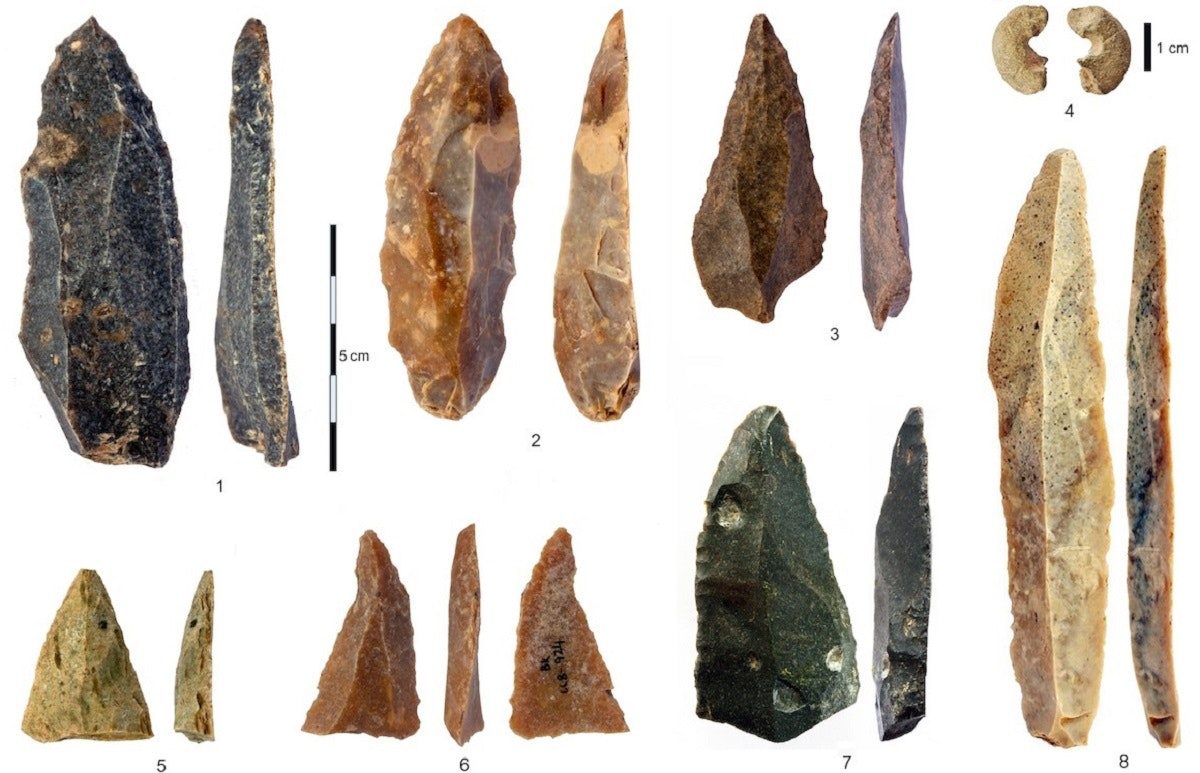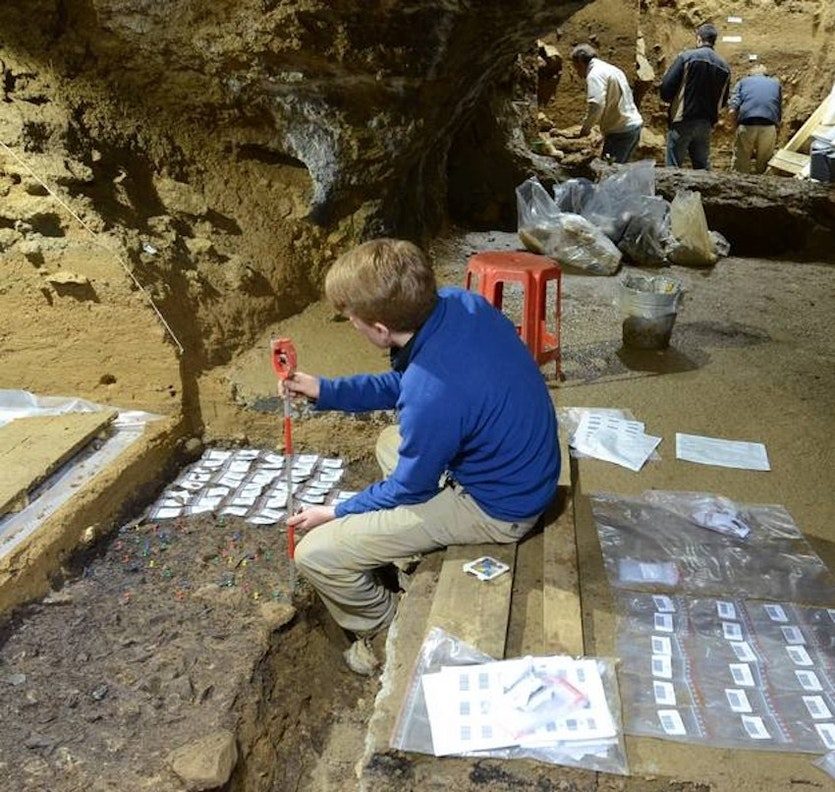
They place humans in the mid-latitudes of Eurasia at least 45,000 years ago, three millennia before previous estimates and 8000 years before the dwindling Neanderthal populations drew their last breath.
The rich trove, found in the extensive Bacho Kiro Caves in modern day Bulgaria, includes thousands of animal bones, blade-like tools, beads and pendants made from teeth and bone alongside five human fossil remains.
Personal ornaments fashioned from cave bear teeth show striking resemblance to those later made by Neanderthals, demonstrating cultural transmission between the groups.
"This confirms that Homo sapiens were mostly responsible for these 'modern' creations and that similarities between these and other sites in which Neanderthals made similar things are due to interaction between the populations," says Shara Bailey from the Max Planck Institute, Germany, co-author of the first paper.
The team, including scientists from across Europe, the US and the UK, focused its analysis on the transition from the Middle to Upper Palaeolithic period between 50,000 to 30,000 years ago.
During this time, humans replaced Neanderthals, but when and how has been somewhat of a mystery, writes William Banks, from the University of Bordeaux, France, in a related News and Views commentary.
This is largely due to patchy, eroded archaeological records, but the Bulgarian site contains dateable remains and sound genetic preservation, which the multidisciplinary researchers probed with state-of-the-art technologies.
Revisiting excavations at the caves, the team, led by Jean-Jacques Hublin, found its treasure chest of fossils in a rich, dark layer near the base of the deposits.
Apart from one tooth, the human fossils were too fragmented to be identified by their physical appearance - but protein sequences can differentiate species because of marginally different amino acid arrays.
Well preserved DNA enabled the researchers to reconstruct full mitochondrial genomes from the tooth and bone fragments using an accelerator mass spectrometer, which linked all the specimens to modern humans from before 45,000 years ago.
Ages were confirmed using the latest high-precision radiocarbon dating techniques, analysed using Bayesian age modelling methods as reported in the second paper by a team led by Helen Fewlass, also from the Max Planck Institute.
Results aligned with the molecular date ranges analysed by Hublin and colleagues, confirming that H. sapiens had trekked to Europe and started influencing Neanderthals at least 45,000 years ago.
Evidence showed they brought high-quality flint from sources up to 180 km from the site which they fashioned into tools like pointed blades for hunting animals, which were butchered as well as being used for raw materials.
More research is needed to understand human filtration of Europe and cultural impact on Neanderthals and how this may have impacted that species' disappearance, Banks notes.
"These new results from Bacho Kiro provide us with an important piece of the puzzle," he writes, "but many still remain to be put in place".




Comment: These finds provide further support to the idea that humans and Neanderthals were radically different - even if a handful did interbreed - because over at least 200,000 years Neanderthals have been shown to continue using pretty much the same tool kit, however once humans arrived on the scene we find evidence of ever increasing ingenuity with tools, exquisite cave paintings, and it seems that before their arrival Neanderthals may have never considered jewelry: